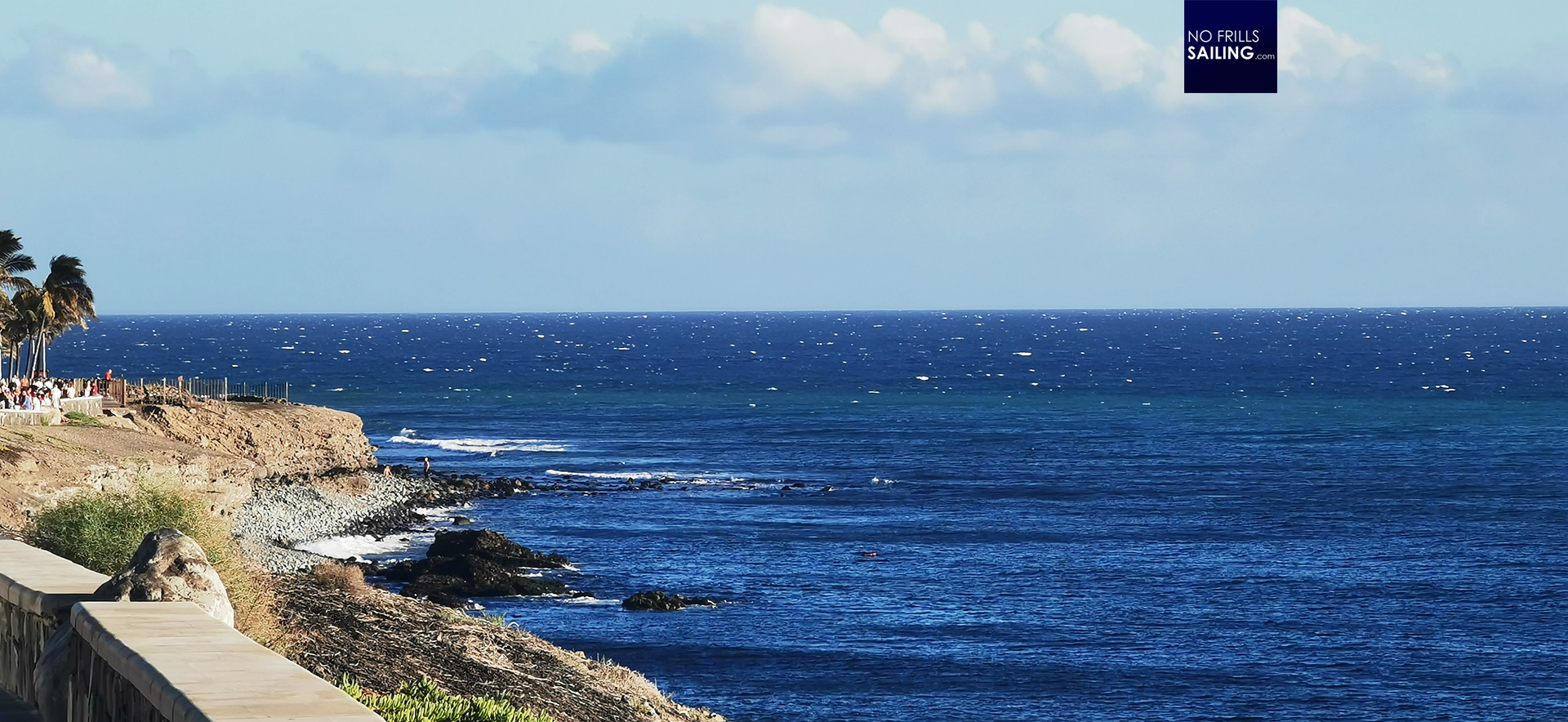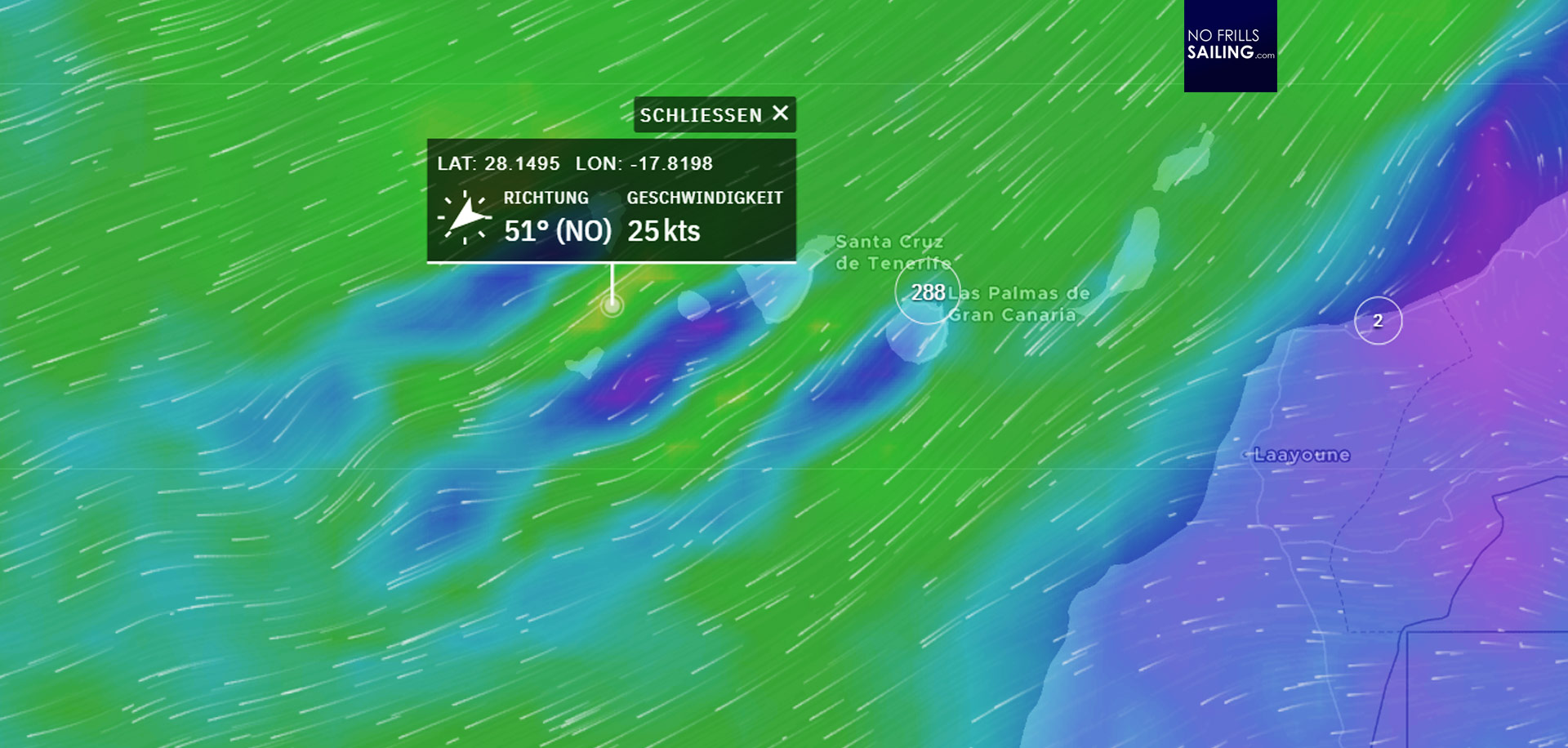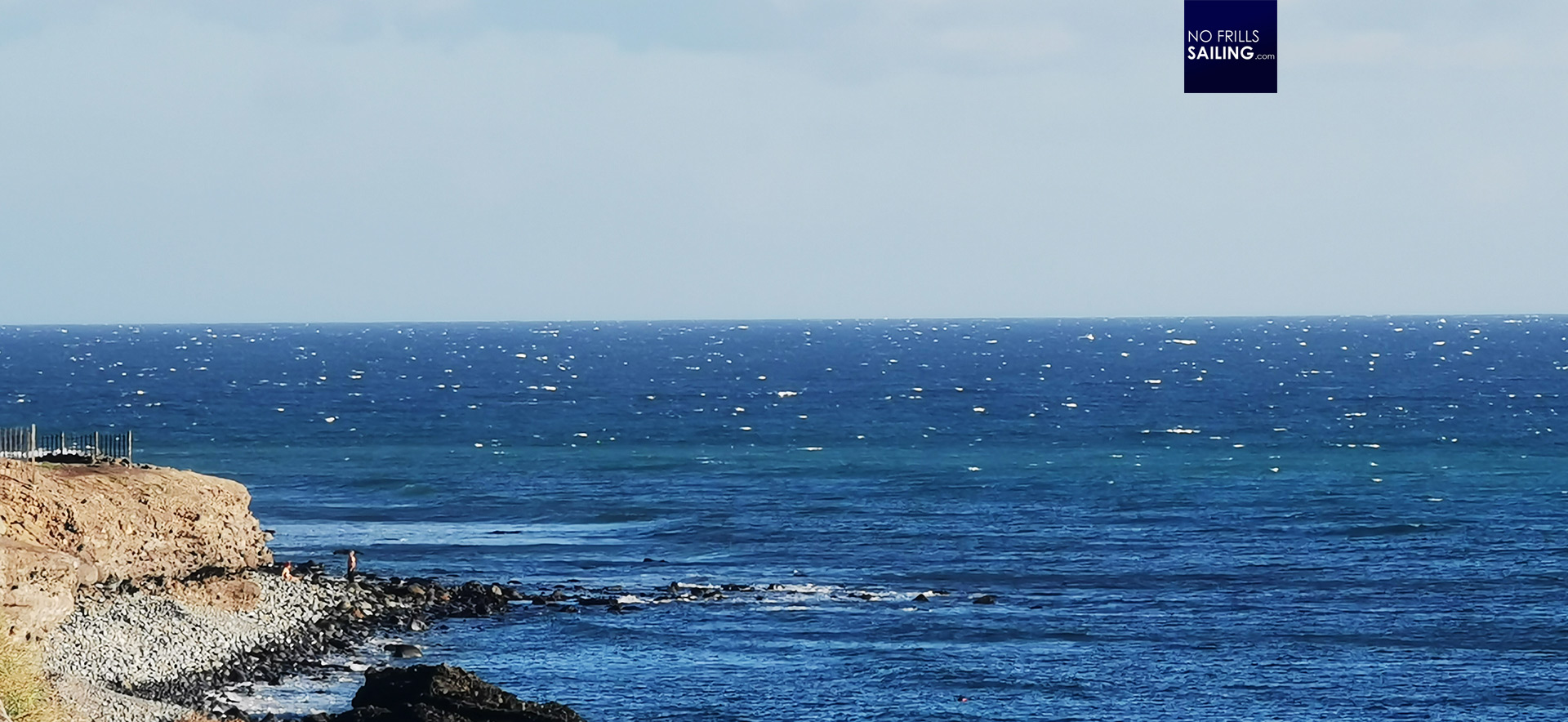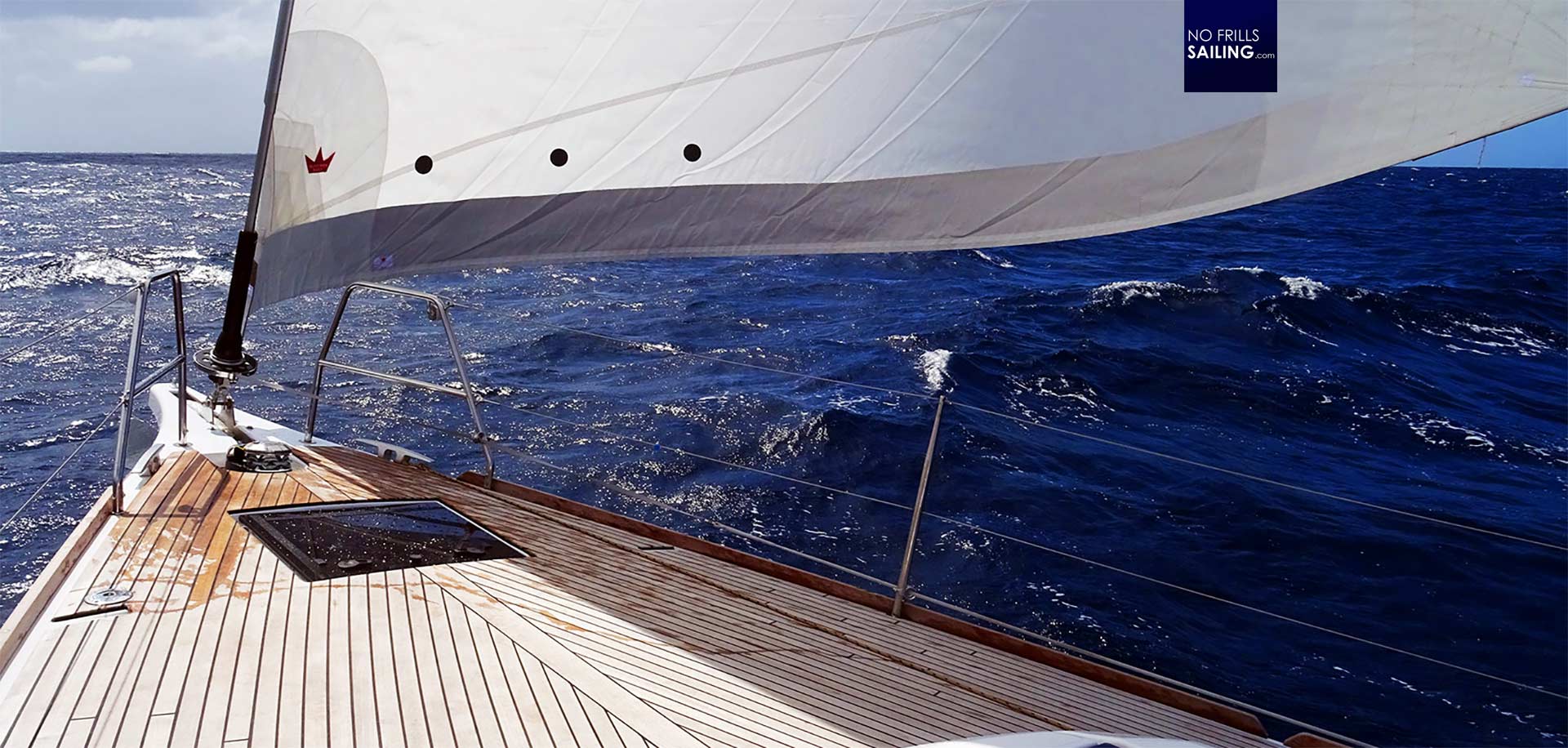As you may have read recently, I am currently on Gran Canaria, replenishing my Vitamine D-reserves before returning to Germany to tackle the upcoming Boot Duesseldorf boat show. Yesterday, whilst on our traditional doddle along the waterfront, looking out on the fantastic blue sea, I realized that I really witnessed a phenomenon I already encountered firsthand during sailing but never really thought about: Wind Acceleration Zones.

These are typical for high islands or deep valleys. The Canary Islands are both famous and infamous for these WAZs and so I want to utilize this occasion and dive a bit deeper into this sailing-related fact. On the picture above you can clearly see the upper half of the ocean where wave pattern is rocky and whitecaps are visible. Wind speed there exceeds 20 knots with ease. The water on the lower half of the picture is significantly calmer with far less waves visible. This is the lee, or wind shadow, of the island Grand Canaria.
What is a Wind Acceleration Zone?
Everything becomes much clearer when we check the Windffinder.com-website and zoom in a little on the Canary Islands Archipelago. You may see the wind approaching from North-West, not the Trade Winds yet but it will become it later down south. The wind approaches the islands with some 10 to 15 knots. It is then forced to pass the channels between the islands.

Having been attentive in Physics during school we know that if in a closed system a medium is pressed with a certain pressure through a smaller diameter, the speed of the medium travelling this “channel” must always increase. This is exactly what happens here: Between the islands wind speeds will increase 10 to 20 knots. Looking at Gran Canaria in the screenshot above, imagine my position at the south-eastern end of the island, looking exactly at the diversion zone between fast-moving air and the slow moving air in the island´s lee.

This is what can be seen here clearly – a fascinating fact to observe from land. Later that day, in the evening, I came by the same spot again but didn´t had my camera with me: I witnessed a boat traveling from the lee low windspeed-zone right into the WAZ going upwind. It was probably going East to Lanzarote or Fuerteventura. When passing through, we could clearly see much more heeling and moating of the boat. So, how it is like to sail into an WAZ?
How to sail through a Wind Acceleration Zone?
I remember quite well my sailing trip from Lisbon via Madeira to Lanzarote aboard a Dufour 460 Grand Large. Being with a very experienced skipper, he told us about this effect. We sailed much more north between Fuerteventura and Lanzarote around the southern tip of the island. Having had a great wind, we had already taken down the mainsail and had only our Genoa out.

At that time, wind direction was a bit more Northern as I showed it in the pictures above so we haven´t been sure if a fully developed wind acceleration zone was to be expected. So we took in some more sail area from the Genoa as well upon approaching the “channel” zone. If you happen to enter these areas, you must respect the WAZ under all circumstances. Wind speed can increase up to 20 knots in a few minutes! This also means that wave heights will increase and you may quickly find yourself in storm sailing conditions. Not good if done under full canvas …

So, taking away much of the sails area (second reef the least) is advised. I´ve read many accounts of sailing crews passing through the WAZ telling stories of a “slipstream” experience and “rollercoaster rides”, fust and fun. It will be like this, and safe for you and your crew too, if you are aware of this phenomenon and act accordingly. Take down sails area, prepare boat and crew for a rocky sea state, buckle up and enjoy a fast ride!
You may as well like to read these connected articles:
Sailing to Lanzarote from Madeira via Selvagem Islands
Atlantic Ocean crossing first time: What to bear in mind?
Canary Islands Sailing: 6 lessons learned
